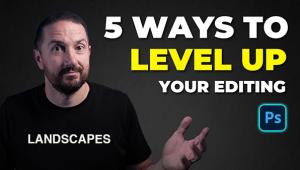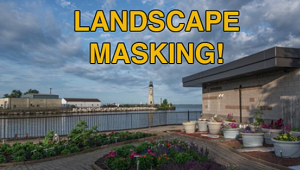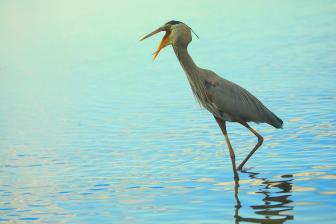Landscape Tips
Photographs of beautiful landscapes made in the right conditions can be absolutely stunning. The keys are to be there in those conditions, and to be ready to record them when you find them.
You can greatly enhance your chances of being there at the right time by doing your research. It's frustrating to travel to a stunning scenic site, only to be socked in by a blizzard—or to find that the magnificent waterfall you traveled 400 miles to photograph has dried up for the summer. Ask folks who have been there, check out books and magazine articles on the area, call the rangers or town officials, do an online search. Check the weather forecast before heading out—if it's going to be bad for photos, choose another destination for that trip. There are lots of great landscapes to be enjoyed and photographed; you can catch the originally intended one another time if conditions aren't good at the moment.
Most landscape pros use large-format cameras that produce 4x5-inch or larger transparencies. But you can make terrific landscapes with 35mm cameras, as the late Galen Rowell and others have proved. The key is to use fine-grained film (Fujichrome Velvia is very popular with landscape shooters, but your favorite fine-grain film will do nicely). As far as lenses go, a 28–105mm or 28–200mm zoom should provide all the focal lengths you'll need, although a wider lens can come in handy for grand vistas and exaggerated-foreground-object shots. A graduated neutral-density filter will reduce the brightness between sky and ground so you can record detail in both (a two-stop filter is a good starter; the pros generally have sets containing a range of different strengths).
It can be a pain to cart a tripod into the boonies, but consider the advantages: The tripod will hold your camera steady, allowing you to stop down for great depth of field and use fine-grained slow film (or the slowest ISO setting on a digital camera, for best image quality), regardless of light level; and it will lock-in your composition so your can study it carefully, and won't accidentally change it as you take the shot. Ansel Adams carted a heavy tripod along with his large-format cameras all over the American wilderness; we modern photographers can carry a modern lightweight tripod.
If you're shooting film (and doing so will give better landscape results than will shooting with consumer digicams if you want to make big prints; however, some of the images illustrating this article are digital images), bracket exposures whenever you have doubts as to the correct one. Keep notes as you do, and you'll soon learn how to expose a wide variety of situations with your camera.
Landscape Tips:
1 Use fine-grain film
2 Shoot near sunrise or sunset
3 Do your research
4 Use a tripod
5 Bracket exposures in tricky lighting
















































